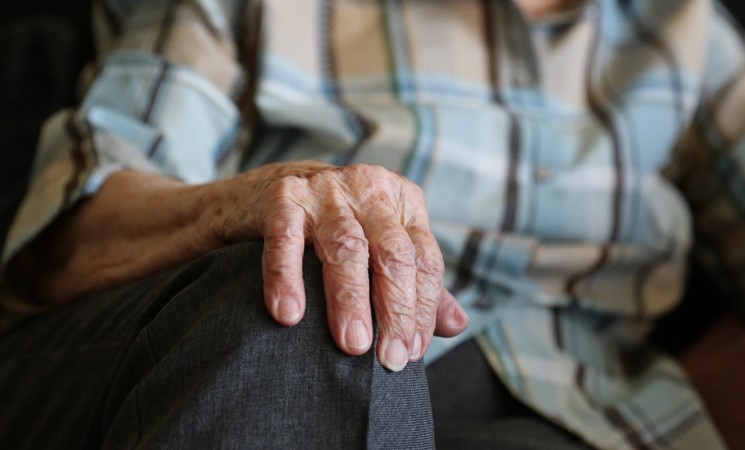Archived Content
This page is archived and provided for historical reference. The content is no longer being updated, and some of the information may have changed over time and could be outdated or inaccurate.

By Erin York Cornwell, Ph.D.
By 2040, nearly one-fifth of the U.S. population will be over age 65, and the vast majority of these seniors will be aging in place, or residing independently in their long-term residences. Many older adults have lived in their residences for 30 years or more. But changes that are common in later life, such as retirement from work and the development of health problems or functional limitations, increasingly center seniors’ daily lives in and around their residential environment.
Seniors’ home structures often make it difficult to age-in-place
Unfortunately, seniors’ long-term residences tend to be older and less well-equipped than those of younger and middle-aged adults, leading to housing problems that present serious health hazards. For example, plumbing deficiencies, inadequate heating, uneven flooring, and broken fixtures can increase the risk of accidents, functional decline, and transfer to long-term care facilities (see Oswald and Wahl 2004). Because of inequalities in access to housing, these housing problems are particularly common among minority and low-income seniors.
Structural home issues that preclude aging-in-place are more common among minority and low-income seniors
My work draws attention to physical and ambient conditions of the household context that are more subtle or transient—such as the presence of clutter, a lack of cleanliness, odor, and noise. I refer to these conditions as indicators of household disorder. The emergence of household disorder in the living spaces of older adults may reflect increasing needs due to illness or functional decline. In fact, social service organizations often use living conditions as indicators of well-being, and environmental health research shows that these conditions increase risks of respiratory illness, infectious diseases, accidents and falls, stress, and sleep disruption.
Increased household disorder can reflect seniors’ physical illness or functional decline
In a recent study, I find that household disorder may also have important social consequences for seniors. I use data from the National Social Life, Health, and Aging Project (NSHAP), which provides an unprecedented opportunity to examine how seniors’ living spaces are associated with their health and social networks. Older adults in this national survey were visited in their homes twice by interviewers—once in 2005-2006 and again in 2011–2012. I designed a module for this survey that enables interviewers to assess the conditions of seniors’ living spaces.
Household disorder can strain seniors’ social relationships and negatively influence their health, wellbeing
Using these data, I find evidence that household disorder leads to changes in social networks and the quality of social relationships. Older adults who reside in more disordered households at the first interview have social networks that are more focused around family members at follow-up, but they also report more strain in their relationships with family members.
Why might this be the case? In later life, the centering of daily activities around the household may make it an important hub for social interactions. But household disorder may be off-putting, leading friends and family members to avoid or shorten their visits. Noise can disrupt communication within the household, and the presence of clutter, lack of cleanliness, and odors could make visitors feel uncomfortable. In fact, to the extent that “tidying up” for guests is expected, visitors may perceive household disorder as a signal that they are unwelcome.
Household disorder can reduce seniors’ ties with friends and neighbors.
Family members are more likely to feel an obligation to maintain relationships even in uncomfortable or unpleasant settings, which may explain why they are less likely to drop out of social networks of seniors with disordered living conditions. Friends and neighbors are more likely to pull away in response to household disorder. This is a critical concern for older adults because disconnecting from friends and neighbors reduces access to social capital and social support, and it may diminish opportunities for community engagement—all of which may have detrimental effects on health and well-being.
While household disorder increases the relevance of family ties in older adults’ lives, I also find that it can take a toll on family relationships. Older adults who have more disordered households at baseline reported more strained relationships with their family members at follow-up. This may reflect conflict, burden, and the depletion of family resources, as adult children and other family members coordinate to help an aging parent maintain their living space.
Social support is critical to age-in-place and maintain senior health and wellbeing
These findings suggest that we need to devote greater attention to interior living conditions of older adults who are aging in the community. Household conditions not only affect seniors’ health, but the household context is also a social space that can promote or erode social relationships and access to social support. For older adults coping with declines in health or function, assistance with basic household maintenance could help to prevent the loss of social ties at a time when social support may be critical for health, well-being, and continued independent living.
Funding Acknowledgement
Support for this research was provided by a National Institute on Aging (NIA) Predoctoral Fellowship and Pilot Funding from the Center on Demography and Economics of Aging at NORC and the The University of Chicago, as well as the NSHAP. The NSHAP is funded by the NIH (R01AG021487, R01AG033903), including the NIA, the Office of Women’s Health Research, the Office of AIDS Research, and the Office of Behavioral and Social Sciences Research.
About the Author
 Erin York Cornwell is an assistant professor of sociology and Sesquicentennial Faculty Fellow at Cornell University. Her research examines the interconnectedness of neighborhood context, household conditions, and social networks in later life, and how these shape health trajectories. Her previous research has been published in the American Journal of Public Health, Journals of Gerontology: Social Sciences, Research in Aging, Annual Review of Gerontology and Geriatrics, Journal of Health and Social Behavior, and Journal of Marriage and the Family. In ongoing research, partially funded by the NIA, she uses smartphone-based data collection to examine how real-time exposure to social environments shapes fluctuations in symptoms of distress (e.g., pain, fatigue) among older adults in New York City and Chicago.
Erin York Cornwell is an assistant professor of sociology and Sesquicentennial Faculty Fellow at Cornell University. Her research examines the interconnectedness of neighborhood context, household conditions, and social networks in later life, and how these shape health trajectories. Her previous research has been published in the American Journal of Public Health, Journals of Gerontology: Social Sciences, Research in Aging, Annual Review of Gerontology and Geriatrics, Journal of Health and Social Behavior, and Journal of Marriage and the Family. In ongoing research, partially funded by the NIA, she uses smartphone-based data collection to examine how real-time exposure to social environments shapes fluctuations in symptoms of distress (e.g., pain, fatigue) among older adults in New York City and Chicago.








